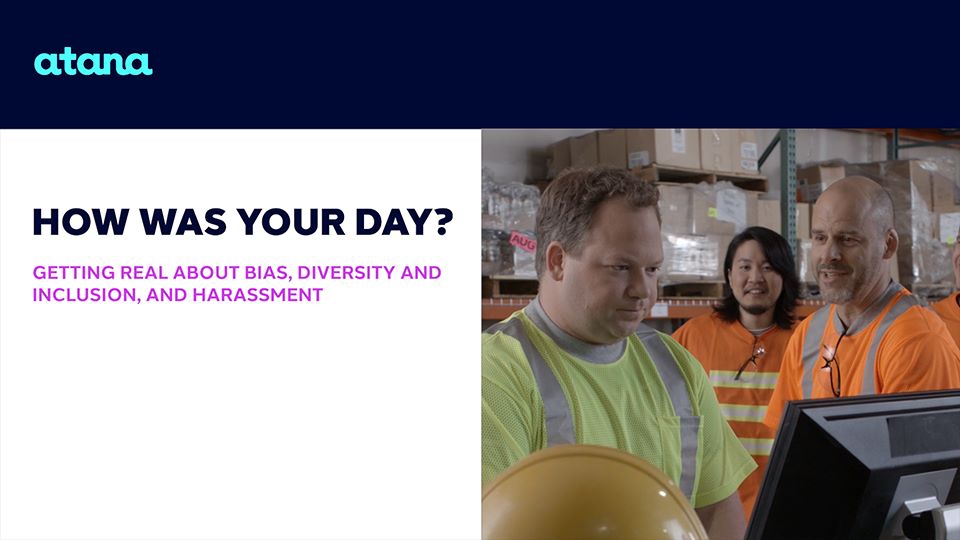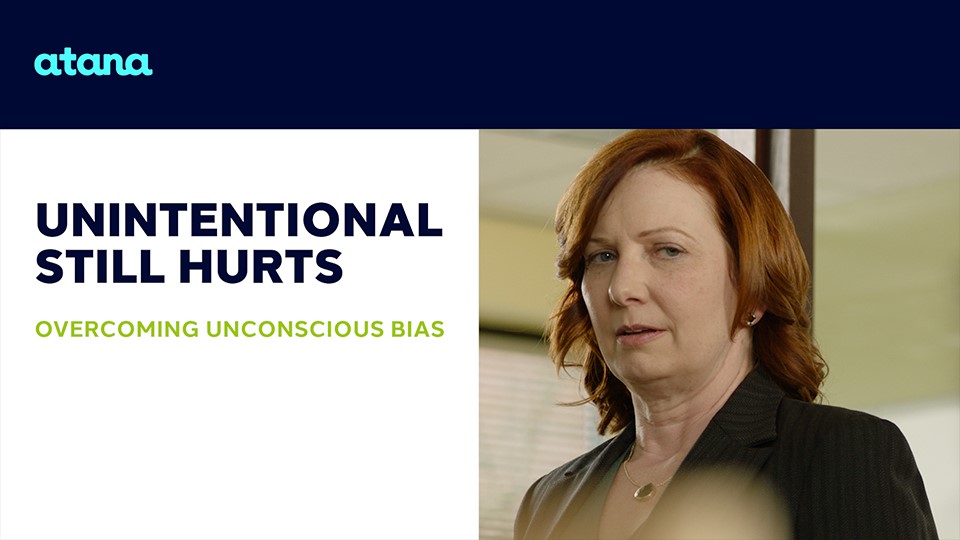
Why is Diversity, Equity and Inclusion in the Workplace Important?
It's no secret that Diversity, Equity and Inclusion (DEI) is one of the primary areas of reform in today's modern workplace. According to McKinsey's 2020 Diversity & Inclusion Insights, the overall case for building a more diverse, equitable, and inclusive workforce is clear. They projected:
- $12T in additional GDP if the gender gap is narrowed by 2025
- $2B in potential revenue if financial inclusion efforts broaden services for black Americans
- 160M women may need to change jobs through 2030 due to automation
Other sources have presented equally compelling reasons for organizations to develop DEI initiatives: 1
- Gender-diverse companies are 25% more likely to outperform their peers
- Ethnically diverse companies are 36% more likely to outperform their peers
- Organizations with an inclusive culture vs. those without are:
- 2x more likely to meet or exceed financial targets
- 6x more likely to be innovative, and
- 6x more likely to anticipate and respond to change
So why are companies still struggling to make progress in this area?
According to a February 2021 LinkedIn article, The Untapped Power of Black Women in Corporate America, the struggle to achieve progress does not stem from a lack of desire. Rather, for many corporations, the problem lies in yielding tangible, long-lasting results. We hope this comprehensive guide will walk you through all you need to know about how to get the most out of your Diversity, Equity, and Inclusion training.
Considerations in DEI Training
Defining DEI
Progress begins with understanding; before organizations can make strides on their DEI initiatives, it helps to get everyone on the same page.
- Diversity is a mix of backgrounds, cultures, races, genders, economic and social situations, thinking styles, and other dimensions that promote growth in a group. Visible characteristics like race and gender are essential when hiring for a diverse work environment. At work, an individual’s capacity and ability to recognize, appreciate, respect, and embrace the unique attributes, experiences, cultures, and identities of others is essential to creating a high-performing work team.
- Equity is the fair, impartial, and respectful treatment of all employees. Equity can be achieved by:
- Ensuring equal access to opportunities, advancement, people, and resources
- Eliminating barriers that prevent growth or create inequality.
- Inclusion is the practice of inviting and valuing all team members' perspectives, contributions, ideas, and opinions. It removes barriers that prevent employees from bringing their whole, authentic selves to work on the organizational level.
- A sense of Belonging at work is the security and support employees experience when they are accepted, valued, and respected for who they are.
Other terms used in the DEI space include
Microaggessions: a comment or action that subtly and often unconsciously or unintentionally expresses a prejudiced attitude toward a member of a marginalized group
Discrimination: A prejudiced outlook, action, or treatment based on a legally protected class (age, disability, race, religion, sex, sexual orientation, etc.
Implicit bias: a bias or prejudice that is present but not consciously held or recognized
Racism: Occurs when a racial bias, which is a belief, is turned into action.
Systemic racism: Strikes when people in power (for example, businesses, schools, government, etc.) utilize processes or structures that promote and reinforce racial inequality.
Alignment around key terms supports effective competency development, research, and training on the topic of inclusion. Specific tools, strategies, policies, procedures, and operations that reinforce, recognize, and reward inclusive behaviors are realized when values and vision are added to the equation.
Creating a Shared Vision
#MeToo, #Black Lives Matter, #Stop Asian Hate, #PulseOrlando are linked to social and racial injustice incidents against various people groups. Each incident sparked an outcry not only from the communities in which they occurred, but also from employees nationwide who sought to ensure their organizations would commit to being part of the movement for lasting change. The employee outcry led to training requests for DEI compliance and reiteration of organizational policies.
Organizations are increasingly understanding that training offered in response to these requests cannot be rushed or handled as an independent issue. In a 2021 article, Training Industry Magazine stated that "training should also be aligned with the organization's values and woven into policies, practices, processes, and operations."
DEI training requires buy-in from leadership and should be anchored with the values that align to the organization's vision. It’s good for organizations to ask, what is the business opportunity being solved?
Organizations should also ask: How will the training integrate into an overall DEI strategy? And, to what degree will leadership be participating?
Realizing the Related Benefit of Shared Impact
DEI training doesn’t just help an organization live its values. When done well, it can also enable the organization to impact its community. After creating a culture of respect that elicits feelings of belonging, internal organizational stakeholders will likely begin to express what they've learned in the workplace out in their communities.
For example, employees might begin looking for ways the organization could participate in community outreach by donating goods and services. Or, they could bring forward opportunities to partner with groups working to impact social justice. In cases like these, there would be both economic and social impacts on the organization.
As social and racial justice movements persist, organizations will learn more about the experiences marginalized employee groups have had within the work environment. This foundational knowledge will help to provide context and lead to the review, revision, or creation of the policies and operational processes that serve to improve the psychological safety and overall quality of workplace cultures for all.
Addressing Unconscious Bias
We all have different perspectives, and because of that, we all have our own unconscious biases. Take a look at this video which highlights how our bias shows up in the workplace:
How Was Your Day? clip @2017-2023, Atana
Because everyone has biases, it is generally recommended that organizations hold some sort of unconscious bias training as a first step in their inclusion education journey. Unconscious (or implicit) bias training should focus on awareness of what bias is and is not, exposure to various types of bias and actionable steps to take to minimize bias impact.
Here are a few reasons unconscious bias training should come first:
- Defines bias and its impact on the workplace which enables recognition of how bias shows up at work and minimizes the argument “I don’t have bias”.
- Explains and illustrates different types of workplace bias making bias real to participants in the learning journey.
- Teaches strategies to overcome bias which answers the question,"Given my new awareness, what can I do to minimize the impact of bias on others and improve equity and inclusion overall?"
5 Ways to Positively Impact Your DEI Initiative
1. Be Strategic vs. Reactionary
Traditionally, when organizations begin to have DEI conversations, the focus is often on compliance or a reaction to a current event. It is not looked at as an integrated business strategy. In most cases, there is one leader in the organization with responsibility for DEI initiatives who is asked to serve as the champion for the work. And this person typically works without resource support, recognition, or reward for any movement or advancement toward creating a more inclusive environment.
Then, when lawsuits are filed for discrimination or harassment, or HR investigations reveal injustices, the lone DEI professional is asked, "how did this happen?" and "what can we do about it?" More specifically, “how do we make sure it doesn't happen again?” The organization’s actions are in reaction to a stimulus versus being a proactive strategy that integrates DEI into their core business.
There is a often a silent expectation that DEI group leaders should invest the time and energy to share ideas and inform DEI initiatives without linking them to any tangible or intangible benefit. Executive leadership, historically, then expresses limited desire to sponsor such groups because it’s more of a “volunteer effort.” Providing DEI group leaders with some form of equity or compensation, or developing a program where executives and DEI leaders routinely exchange data and insights, are important actions for today's organization's to consider.
An integrated business-driven strategy to DEI and true lasting culture change requires significant behavioral shift and leadership accountability. In fact, DEI training should take learners on a journey. The desired impact sought by many organizations simply won’t occur with a one-and-done training approach.
A 2016 meta-analytic research study on diversity training evaluation found that "the positive effects of diversity training were greater when training was complemented by other diversity initiatives, targeted to both awareness and skills development, and conducted over a significant period of time."
May 25, 2020
The death of George Floyd and 9-minute video depicting the event demonstrates a stimulus that prompted organizations to react with regard to DEI.
Due to the tremendous societal outcry for change, the cost of not responding to the incident was significant. But that has lead to a concern that these reactions may prove to be more “lip service” than an invitation or investment in sustainable, tangible change.
Acknowledgment of this fact is not an attempt to malign organizational leaders, but rather to highlight what we know to be true from emotional intelligence research — people react emotionally first, then respond logically.
So, what actions did organizations take? Many held listening sessions with marginalized groups of employees to get their thoughts. While a good start, this approach appeared to some to put the responsibility, weight, and pressure for resolving a systemic problem on the marginalized groups themselves. The benefit of the conversations, however, was that it allowed leaders to ask questions and become aware of the lived experiences of those who work in their organizations and live in their communities.
Following the listening sessions, many leaders took the feedback. They decided to seek training programs to close a knowledge gap, or they took the time to create a strategy and engage in shifting the organization's culture based on what was learned.
The good news is that a strategic, long-term approach to DEI yields great benefits for individuals and organizations:
- The Center for Talent Innovation found that, at large companies, employees who perceive bias are 3x as likely to disengage, 3x as likely to make plans to leave, and 2.6x more likely to withhold ideas. But, at large companies with inclusive team leaders, employees are 87% less likely to perceive bias and 39% more likely to be engaged.
- Fast Company reports companies with above-average gender diversity and levels of employee engagement outperform companies that are below average by 46% to 58%
- A Cloverpop white paper concluded inclusive decision-making leads to better business decisions 87% of the time, with decisions being made in half the meeting time.
- A study by Harvard Business Review showed that inclusive leaders achieve: 17% increase in team performance, 20% increase in decision making quality, and 29% increase in team collaboration
2. Be Intentional About Visible and Invisible Diversity
In the workplace, all types of diversity can strengthen a team. There are two primary types:
- Visible diversity - anything that can be seen, such as race, gender, age, physical ability, or physical disability, etc.
- Invisible diversity - anything you cannot see, such as ethnicity, education level, religious beliefs, cognitive ability, etc.
Some have defended a lack of visible representation in their organizations by highlighting their "diversity of thought" or invisible diversity. But visible diversity, also known as identity diversity, is important to acknowledge. The addition of identity diversity ensures different cultures, experiences, and perspectives are included in the organization’s decision-making and innovation– making these processes much more robust and fruitful than they would have been had the organization relied on thought diversity alone.
Organizations must be intentional in this work—setting their goal to have visible diversity while also continuing to engage in invisible diversity.
3. Measure Results
We know that what gets measured in an organization is what gets done. DEI is no exception.
1) Before they can measure, though, organizations must acknowledge where they are. To begin this process, it’s helpful to consider the degree to which they are currently living The 5 Rs of Diversity, Equity, and Inclusion:
Real Conversations – Does organizational leadership look at DEI as part of the business strategy and have conversations with employees, specifically those from underrepresented groups? Are there discussions about how to improve the business from a DEI lens and address cultural nuances (e.g., ads that appeal to a specific culture group, language choice used in communications, etc.).
Representation (Leadership and Employee) – Has the organization reviewed the demographic makeup of its leaders? How might looking at the employee lifecycle (job description, hiring, onboarding, development, promotion, etc.) or capturing the employee perspective be combined with other organizational data to assess needs in this area?
Respectful Relationships (Connectivity & Belonging, Pre-Hire, Post-Hire) – Does the organization ensure that all key stakeholders – including both the employee population and leadership – are aligned and connected? Does every person in the organization feel that (s)he belongs? Do they feel connected to the work? Do they believe in the values/mission/vision and feel the organization lives up to them, or does it appear to employees that the organization makes promises about equity and inclusion (particularly when recruiting) but fails to deliver?
Research (Workforce Trends, Workplace Trends, DEI Trends) – Does the organization use insights to inform action? For example, a 2019 Harvard Business Review article, revealed that leaders saw recruitment as the biggest obstacle to racial and ethnic diversity, while employees of color ranked advancement as the top obstacle. If an organization’s strategy has been focused solely on the perspective that “recruitment is the problem”, the lived experience of employees of color who feel thwarted when it comes to opportunities for advancement have been negated. Outside information can inspire and enable new ways to improve inclusion.
Results (Systems and Structure accelerate business results and reinforce values and brand.) Has the organization created ways to measure the degree to which they are achieving desired levels of diversity and inclusion? Is the organization tracking the impact DEI is having on other business results? Are positive outcomes promoted and celebrated throughout the organization?
2) There are ample ways to measure DEI, and we have several listed here:
No matter the measurement decision, the data-gathering effort should, at a minimum, answer these six questions:
- What is the question the data output will address?
- How will the data be used? What will be done with the data?
- Who is the audience for whom you will be providing the report results?
- What output are you expecting from the data collection?
- What data method collection will be best? (Note: this is driven by the question(s) to be answered)
- Who will benefit from the insights gained from the research?
4. Step Toward Desired Outcomes
DEI is neither a fad nor an experiment. Companies invest in their organization's future success when evaluating their workplace culture through a DEI lens and implementing change. Here’s how to step toward desired, clearly articulated organizational DEI outcomes.
Assess where you are – before introducing an intervention or training, organizations should take a moment to assess their current state using questions aligned to the strategic DEI plan. They can then later measure the intervention's impact after it has been completed for aggregate and comparative analysis to capture any movement in the targeted areas.


Create awareness - as the DEI journey begins, organizations should engage leadership in fostering an understanding of the expected change(s) and then share those expectations with employees.
Advance knowledge – By sharing data and introducing tools and job aids that can be used to support desired behaviors, organizations keep the learning alive. Organizations should strive for collaboration—looking for opportunities to generate innovative solutions based on insights and feedback around the DEI conversation.
Maintain accountability – Throughout the DEI training journey, reinforce behavioral expectations by holding everyone accountable for putting into practice what they’ve learned about creating a more inclusive culture.
Reassess where you are – Organizations should regularly evaluate what progress, if any, has been made toward established goals and increased inclusion and engagement.
5. Learn From Others
Organizations in nearly every industry are taking action to create an inclusive culture and improve diversity and equity. Here are a few case studies of organizations making strides in their DE&I work:
Sephora launched a sponsored research study entitled Racial Bias in Retail that highlights plans to mitigate racially-biased experiences in the U.S. Retail environment, calling for a more inclusive retail industry.
McDonald’s is committed to changing the face of its leadership and taking action to hold leaders accountable for making DEI a priority and bringing DEI to life across their teams. Their goals specific name (1) increasing the number of women in leadership roles to 45% and (2) increasing representation of historically underrepresented groups at Sr. Director and above levels in the U.S. to 35% by 2025.
The True MOSAIC team at Fleishman Hillard, a Global PR & Marketing Agency, released an article to reflect what the year of racial reckoning revealed for corporations. The results are shared in their “One Year Into Our Racial Reckoning” report, which offers recommendations on corporate leaders' actions and decisions based on their observations.
University of South Florida Muma College of Business launched a 7-week DEI in the Workplace certificate program focused on addressing equity issues and fostering inclusivity. The free program yielded at least 130K participants.
Looking Ahead: The Future of DEI
An expanded outlook on the overall work environment, organizational structure, competencies, and socialization process is needed to continue improving DEI. Companies who opt out of the DEI movement may find themselves losing market share and talent, which hampers competitive advantage.
In 2020, the United States experienced a paradigm shift that revealed bias and inequities in healthcare, pay equity, and treatment of marginalized groups. Workplace leaders are responsible for, and must be accountable for, implementing qualitative and quantifiable measures to demonstrate progress toward a more equitable and inclusive environment.
There will be an expectation that individuals (a) know the role they wish to occupy and (b) embrace the mindset and behaviors that enable them to be an ally and advocate for DEI.
Deeper research will shed even more light on inequity and injustices. These will require immediate remediation. It is estimated that:
- There will be increasing representation of women and marginalized groups in leadership positions.
- Organizations will be more transparent about their commitment to DEI and how it will be accomplished.
- Employees will begin to amplify their voices.
Diversity, Equity and Inclusion Checklist
Preparing for the future of DEI, comes down to one word – VALUE. Leaders who demonstrate appreciation for all, seek multiple perspectives, and treat team members with dignity and respect are leaders who value their teams' contributions.
☑ Validate the voice of every employee. As systemic issues for currently marginalized groups are resolved, it is important to ensure that new groups aren’t created. This means that there must be an appreciation for every employee’s lived experiences and contributions.
☑ Amplify the voice of every employee. Continue hosting listening sessions and add to it small groups and guided discussions that allow stories to be shared.
☑ Lead proactively – leaders should lead the DEI discussion and not await an investigation or incident to prompt decisions that support, empower and enable progress in culture change
☑ Use data and metrics to confirm and inform the vision and strategic planning for DEI work
☑ Educate all – every organizational member, including senior leadership, should actively participate in facilitated discussions to keep the conversation going.
As leaders follow through on their actions and are held accountable for the desired culture, all individuals will begin to feel that they belong.
Recommended Training
How Was Your Day?
Getting Real about Bias, Diversity and Inclusion, and Harassment
Unintentional Still Hurts
Overcoming Unconscious Bias
Atana Insights, our proprietary analytics engine, amplifies the impact of this award-winning DEI content by turning course engagement into data, data into insights, and insights into actionable next steps that improve key performance indicators directly tied to culture change and training ROI. The more courses an employee engages with, the stronger the data, the more impactful the insights—and the better the outcomes. Request a demo of our Atana Insights dashboard.
About the Author


LaTonya Jackson Ed.D., DEI and Organizational Culture Consultant
Highly skilled in collaborative partnerships, individual and group coaching, and people development, Dr. Jackson has served as Learning and Development Manager at Walton Enterprises and as Human Resources Director for Walmart.
She received a BSBA in Marketing and Finance at the University of Nebraska- Lincoln, a M.Ed. in Higher Education Leadership from the University of Arkansas, and a Doctor of Education in Workforce Development Education from the University of Arkansas at Fayetteville.
1 Media Partners infographic, Getting Real About Bias, Inclusion, Harassment and Bullying







